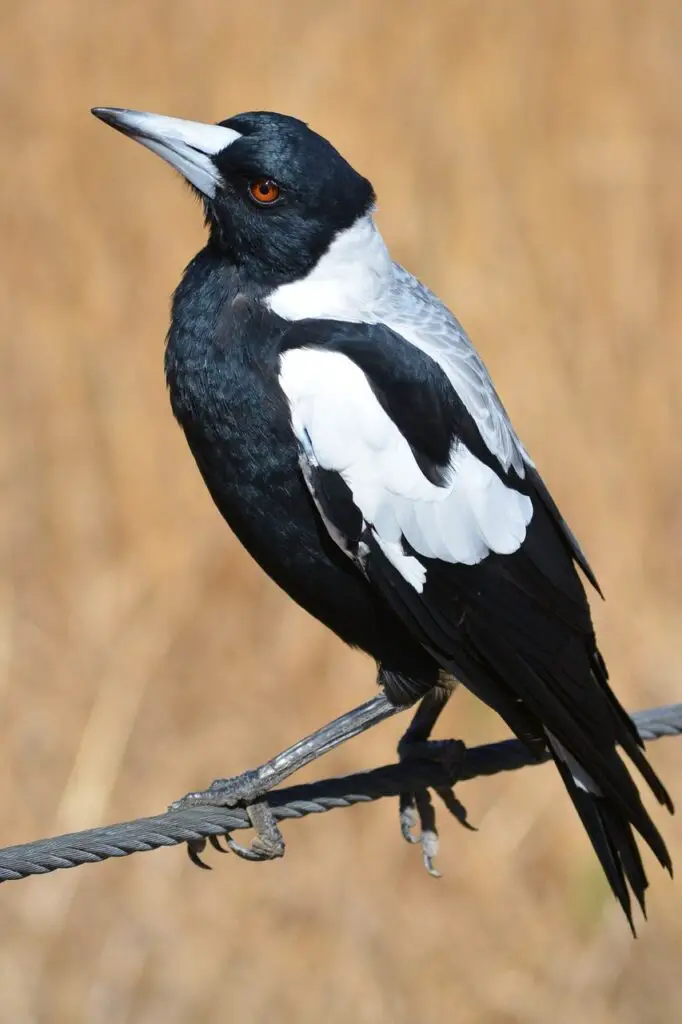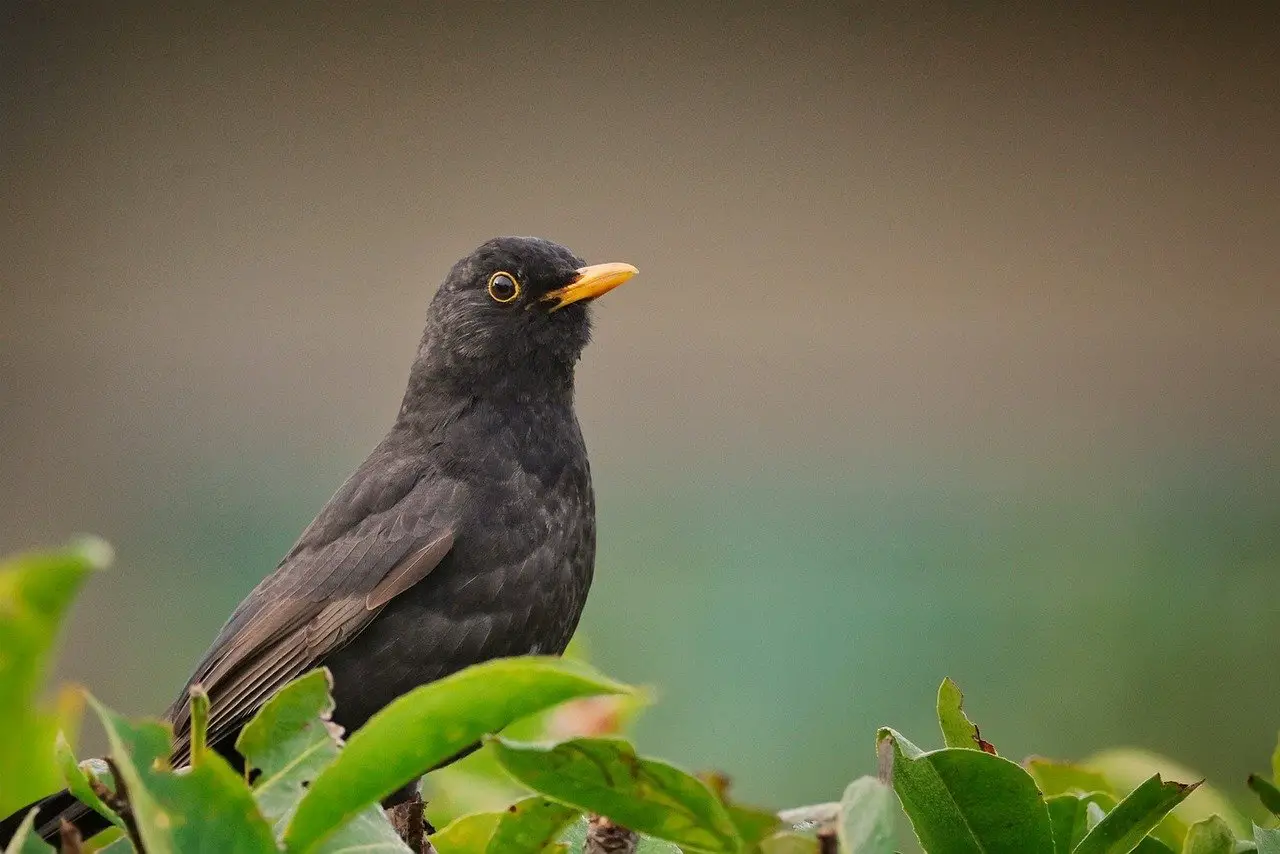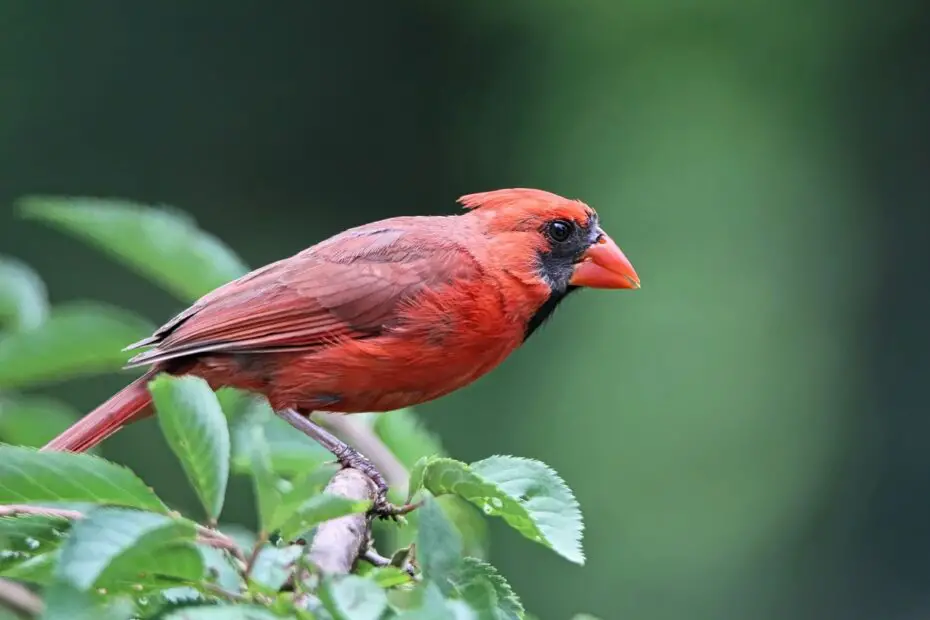In the enchanting world of birds, a diverse array of calls and songs can be heard. Among these vocalizations, the melodious whistles of certain bird species captivate our attention and fill the air with delightful tunes. In this article, we delve into the fascinating realm of birds that whistle, exploring the purpose behind their melodic sounds and the wonder of their communication.
You may also want to read about red birds.
Birds That Whistle:
Northern Cardinal
The Northern Cardinal, with its vibrant red plumage and distinctive crest, is renowned for its beautiful whistling songs. Males, in particular, produce a series of clear, whistled notes that often resemble the phrase “cheer, cheer, cheer” or “birdie, birdie, birdie.” These songs serve as territorial markers and play a role in courtship rituals.
Australian Magpie
The Australian Magpie, a striking black and white bird native to Australia, is celebrated for its complex vocal repertoire, including its melodious whistling abilities. These intelligent birds can produce a range of melodious notes, creating elaborate and melodious songs that echo through their territories.

Blackbird
The Blackbird, found in Europe, Asia, and North Africa, is another notable whistler among birds. Males emit a beautiful and distinct melodic whistle that can be heard during the breeding season. Their enchanting songs fill the air, creating a melodious backdrop to their habitat.
Whistling as Communication
Courtship and Territorial Displays
Birds often employ whistling as part of their courtship rituals and territorial displays. Male birds use their whistling songs to attract mates and establish their territories. These melodious serenades serve as a declaration of their presence and breeding prowess.
Vocal Mimicry
Some whistling bird species showcase remarkable vocal mimicry skills. They can imitate the songs of other birds, environmental sounds, and even human tunes. These impressive abilities allow them to communicate and interact with their surroundings in unique ways.
Whistling as a Form of Defense
Alarm Calls
Whistling can also serve as a means of defense for birds. When sensing danger, some bird species emit sharp and piercing whistles to alert others in their flock of potential threats. These alarm calls effectively communicate the presence of predators, enabling coordinated responses to ensure the group’s safety.

Distraction Techniques
Certain birds employ whistling as a distraction technique to confuse and deter predators. By producing sudden and unexpected whistling sounds, they divert the attention of potential threats away from their nests or vulnerable offspring, giving them a chance to escape.
Whistling as a Means of Identification
Species-Specific Songs
Whistling serves as a crucial means of species identification among birds. Each bird species possesses unique whistling songs that act as auditory signatures. By recognizing and interpreting these distinct melodies, birds can identify members of their own species and establish social bonds.
Individual Recognition
Within a species, individual birds often have their own unique whistling patterns. These individual signatures allow birds to recognize and distinguish specific individuals, aiding in mate selection, maintaining social hierarchies, and facilitating communication within flocks.
The Science Behind Whistling
Vocal Anatomy and Production
Whistling in birds is produced through a combination of vocal anatomy and precise muscular control. The syrinx, a specialized vocal organ located at the base of the trachea, plays a crucial role in producing varied pitches and melodic sequences. Birds modulate airflow, tension, and positioning of vocal muscles to generate specific whistling sounds.
Melody and Pitch Control
Birds exhibit remarkable control over melody and pitch when whistling. By manipulating the tension and shape of their syrinx and vocal muscles, they can produce a wide range of notes and melodic patterns. This control allows them to convey intricate messages and engage in complex vocal dialogues.
Birds That Whistle: Conclusion
The whistling birds of the avian world gift us with enchanting melodies and a glimpse into their fascinating communication. Whether through courtship, defense, or identification, these melodious chirpers add an extra layer of beauty and wonder to our natural surroundings. As we appreciate their whistling abilities, let us embrace the diversity and artistry of avian vocalizations.
FAQs
Q: Can all bird species whistle? A: While many bird species possess vocalizations, not all species produce whistling sounds. Whistling abilities vary among bird families and are influenced by factors such as vocal anatomy and evolutionary adaptations.
Q: Do birds learn to whistle or are they born with it? A: Birds have innate vocalization abilities but also learn from their environment. They acquire and refine their whistling skills through a combination of genetic predisposition and vocal learning during their early development.
Q: How do birds produce different whistling sounds? A: Birds produce different whistling sounds by controlling airflow, tension, and positioning of vocal muscles within their syrinx, the specialized vocal organ located at the base of their trachea. These precise vocal manipulations allow them to generate a wide range of pitches and melodies.
Q: Can humans train birds to whistle specific tunes? A: Some bird species, particularly those with strong vocal learning abilities like parrots and mynah birds, can be trained to mimic specific tunes or human speech. Through consistent repetition and positive reinforcement, these birds can learn and reproduce intricate melodies.
Q: Are there any health benefits to whistling for birds? A: Whistling serves primarily as a means of communication for birds rather than a health-related activity. However, engaging in vocalizations, including whistling, can contribute to overall well-being by enabling social interaction, establishing territories, and maintaining social bonds among bird species.
